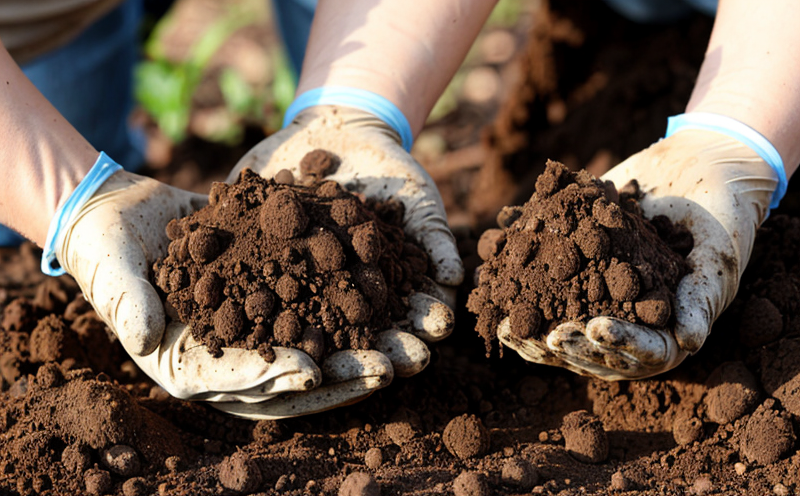FAO Soil Biodiversity Functional Testing
The Food and Agriculture Organization (FAO) Soil Biodiversity Functional Testing is a comprehensive service designed to assess the functional diversity and resilience of soil microbial communities. This testing method aligns with international standards such as ISO 17295:2013, which sets out guidelines for assessing soil biodiversity. It evaluates how various soil organisms interact within their environment, contributing to essential ecosystem services like nutrient cycling, carbon sequestration, and plant growth promotion.
Our service utilizes advanced laboratory techniques including flow cytometry, next-generation sequencing (NGS), and real-time PCR to quantify the functional richness of microbial communities. These methods allow us to identify specific groups of microorganisms responsible for key ecological processes. For instance, we can measure the abundance of nitrogen-fixing bacteria or decomposer fungi that play crucial roles in maintaining soil health.
The testing process involves several steps: first, soil samples are collected from different depths and locations within a field or plot. These samples undergo rigorous preprocessing to ensure accuracy; this includes sieving, homogenization, and dilution procedures. Next, the processed samples are subjected to DNA extraction followed by amplicon sequencing targeting 16S rRNA genes for bacteria and ITS regions for fungi.
Once sequenced, data analysis focuses on identifying operational taxonomic units (OTUs) representing distinct microbial populations. From this information, we generate detailed reports outlining the functional diversity of each sample set. Our reports also include comparative analyses with baseline reference datasets provided by FAO or other reputable organizations to contextualize findings.
This service is particularly valuable for researchers studying agricultural sustainability and climate change mitigation strategies. By understanding which microbes are active under certain conditions, stakeholders can make informed decisions about land management practices that promote biodiversity while enhancing productivity.
Moreover, this testing method supports compliance with environmental regulations related to soil quality and health. It helps ensure that agricultural activities do not lead to detrimental impacts on natural habitats but instead foster ecosystems capable of sustaining long-term benefits for both humans and nature.
- Biodiversity Assessment: Identification and quantification of diverse microbial groups involved in essential ecosystem functions.
- Functional Richness Evaluation: Measuring the capacity of soil biota to perform vital tasks such as nutrient availability regulation.
- Ecological Impact Monitoring: Assessing changes in microbial community structure resulting from external factors like climate variation or chemical amendments.
- Sustainability Indicators Development: Establishing metrics that reflect the health of soil microbiomes over time, aiding in tracking progress towards sustainable development goals.
- Regulatory Compliance Verification: Providing evidence to support adherence to international standards concerning soil quality and biodiversity conservation.
The results from our FAO Soil Biodiversity Functional Testing can inform strategic decisions about land use planning, fertilizer application rates, pest management approaches, and water resource protection measures. With this knowledge, farmers and policymakers alike have the tools necessary to implement practices that enhance both short-term agricultural yields and long-term environmental sustainability.
Quality and Reliability Assurance
We adhere strictly to international standards such as ISO 17295:2013 when performing FAO Soil Biodiversity Functional Testing. Our laboratory maintains strict quality control measures, including regular calibration of instruments and proficiency testing exercises involving external laboratories recognized worldwide.
Our team consists of highly trained professionals who stay updated on the latest developments in soil biology research. They use standardized protocols to ensure consistent results across multiple projects. Additionally, we employ robust bioinformatics pipelines for data processing and analysis, ensuring accurate interpretation of complex datasets derived from our tests.
To further enhance reliability, we implement rigorous quality assurance checks at every stage of the testing process—from sample collection in the field to final report generation. These measures include peer reviews conducted by independent experts within our organization as well as external validation through collaborations with renowned academic institutions and government bodies.
Our commitment to excellence extends beyond technical accuracy; we also prioritize transparency, providing clear explanations of methodologies used along with all relevant documentation. Clients can request access to raw data upon request if needed for further analysis or publication purposes. By offering these services, we strive to build trust between ourselves and our clients while delivering reliable outcomes that contribute significantly towards achieving global food security objectives set forth by FAO.
Use Cases and Application Examples
The FAO Soil Biodiversity Functional Testing has numerous applications across various sectors. In agriculture, it aids in optimizing fertilizer use through precise identification of nitrogen-fixing bacteria present in the soil. This not only reduces costs but also minimizes environmental impact by decreasing synthetic nitrogen inputs.
In urban planning, this testing helps assess the health status of soils within green spaces and parks, informing decisions about maintenance practices that preserve biodiversity hotspots within cities. It also supports reclamation efforts on contaminated lands by identifying suitable microbial inoculants capable of restoring degraded ecosystems.
For environmental agencies tasked with monitoring compliance with pollution control laws, our service provides valuable data indicating the effectiveness of mitigation measures implemented at industrial sites. By measuring changes in microbial community composition before and after treatment, authorities can better evaluate whether prescribed actions have achieved desired outcomes.
In research institutions focused on developing novel biopesticides or biostimulants, these tests offer critical information regarding potential interactions between candidate compounds and existing soil microflora. Such knowledge is essential for creating products that are both effective and safe for use in agricultural settings.





